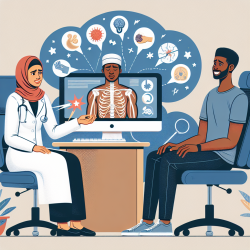Introduction
The importance of culinary and lifestyle medicine education is increasingly recognized as a critical component in combating chronic diseases. The research article "Four-year longitudinal culinary and lifestyle medicine track for undergraduate medical students: development and implementation" provides valuable insights into integrating lifestyle medicine into medical education. This blog explores how practitioners can enhance their skills by adopting the research findings and encourages further exploration into this innovative educational approach.
Key Findings from the Research
The Culinary and Lifestyle Medicine Track (CLMT) at West Virginia University School of Medicine is a pioneering initiative that spans four years of medical education. It focuses on four foundational wellness concepts: healthy nutrition, physical activity, stress management, and restorative sleep. The program includes approximately 300 hours of in-person and virtual education, offering hands-on teaching kitchens and other interactive components.
Key outcomes of the CLMT include:
- Students entering diverse medical specialties, indicating the broad applicability of lifestyle medicine.
- Positive feedback from students on personal wellness and clinical skills improvement.
- A 100% pass rate for students taking the Certified Culinary Medicine Specialist (CCMS) exam.
Implications for Practitioners
Practitioners can leverage the insights from this research to improve their skills and patient outcomes by:
- Incorporating lifestyle medicine principles into their practice, focusing on nutrition, exercise, and stress management.
- Engaging in continuous education through programs similar to the CLMT to stay updated on the latest lifestyle medicine practices.
- Encouraging patients to adopt healthier lifestyles by setting specific, attainable goals and providing practical advice on nutrition and physical activity.
Encouraging Further Research
The success of the CLMT highlights the need for more comprehensive research into the long-term impacts of lifestyle medicine education. Practitioners are encouraged to explore further research opportunities to understand better how lifestyle interventions can be integrated into various medical fields and patient demographics.
Conclusion
The integration of culinary and lifestyle medicine into medical education, as demonstrated by the CLMT, offers a promising approach to improving healthcare outcomes. By adopting these principles, practitioners can enhance their skills and contribute to the well-being of their patients. For those interested in delving deeper into the original research, please follow this link: Four-year longitudinal culinary and lifestyle medicine track for undergraduate medical students: development and implementation.










